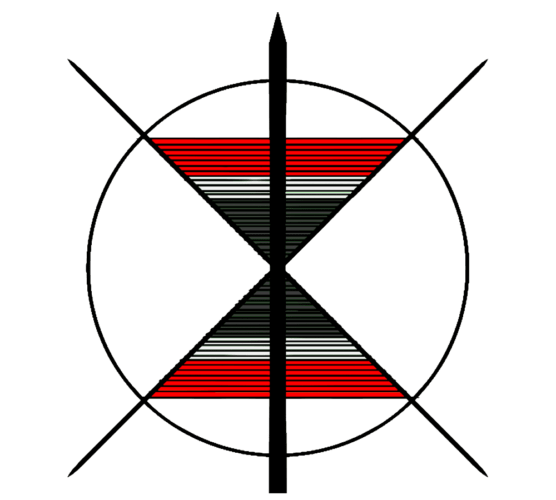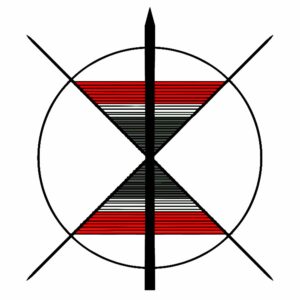Settlement of Maring Tribe
The legendry or oral chronicle about the early settlement of the Maring people says that they after first settled at Kulwi-Shongshong (underneath the earth or East land) gradually moved to Washaphai or Wanshangphai (the empty vast valley), Mongrengphai and Mongsha in Kabaw valley. These places are now in Myanmar. "Before 261 B.C. the Marings were already settled in the Kabaw valley. According to Myanmar traditions, Marings came from a region in Western China between the sources of the Yang-tse-kiang and Hwang-Ho rivers and reached upper Myanmar through the Ango-Range, they settled around the lrrawady River-Ningthi basin and from there reached Maringhai" (Roland-1998, p.57).
In due course of time, the civilization of the Maring people gradually spread along the Ningthee basin (Inthee river basin) in Moliching (also known as Angkoching) range and in the Yoomadung Hills (Myanmar). Later on, people took their own choice of directions and traveled looking for new places for settlement. So, forming different migratory groups, some groups proceeded towards the place called Mongmi and to Phaikaryam then to Mongrengphai and to Topanga in Kamongbung range and came to Dolenbung. There they set up several monoliths or megaliths as signs of settlement which can be found existing around till today (present Myanmar). At last they came to Shangthelbung range or Bungkarshaang (present Manipur: India) and from there they dispersed to different directions and established several villages like Ayong-Atoukhu (Yongkhul/ Khulimol) and Sarbu/Saibu/Sarbukhong (Saibol), Sairel-Saishim, Atou, Makan, Chingshao, Kashung, Lamasi/Nambasi and Narum/Ralimkhu in Kharou range, etc. Some sections of the Maring people traveled towards Mongrengphai (a place where people lived like a dream or dreamland)/Muirengphai/Murringphy,*3 and further proceeded towards the places like Thipamna, Songkan, Khampat, Kameng, Latao, Taap, Lichiek, Mangsa, etc. Later on, they moved towards Mongthelbung in Bungpui Range and established a village called "Uipo Yultang".
'3 Or. R. Brown: "Report for 1868-69; pp.118 & 124, and T.C. Hodson: The Nagas of Manipur, 1996; pp.10, 11 & 15.
And the another or major section of the Maring people traveled and proceeded towards the western side of the Ningthee basin and started settling in places called Panyangbung, Sekmabung, Sharchibung, Yaanglhungthil, Oklebung, Panubung, Makoubung, Ramshekbung, Shangthil, Ramshipbung, Yaangtompe, Khukyul, Khochep, Khungrul, Yulbung, Shabung, Pungrul, etc. and later on came and settled on the Laangkoubung-Pulbung range (in Manipur). The places of settlements mentioned above may not be in correct orders, but these names of the places of settlements are mentioned in the folk songs of our forefathers.
The legendry/oral chronicles of the forefathers (also corroborated by the written history of the Royal Chronicles of Manipur Cheitharol np arol Kumpaba) says that some Maring people even traveled towards the Imphal valley and settled at the Langol Hills (North Imphal during or before the time of Meidingu Ura Konthouba (568-658 A.D.) which is still known as Langol Maring Khumnan (Haokap Chingshang Khunpham Ngangcheng) with Meba Laipham (Mebungsui-Theemkhui from the Khulsaibung village then Priest or Maiba of that particular sacred place) near Langol Housing complex and Laithungching (which is called as Lanthungching village at present). This was known to be the place where the Maring people from that Haokap Chingshang Khunpham Ngangcheng village (Langol hills) were cursed by the then Maharaja of Manipur (Meidingu ura Konthouba). Due to the terrible curse of the Maharaj, they could not settle further in that place (village) thus ran away for their safety from that terrible curse (laithungba) of the Maharaja towards the places like "Haobam Marak, Lamlong (lmphal-east, Leishang Kong, a village in the valley some seven or eight miles south of the capital-Imphal. Soibam Leikai, the place where the Marings of Haobam Marak put the traps/nets (soi thaba) for fishing at the lake. Haokha-Tangjeng (Keingam's Fishing spot/place, from where one Keingam Khuiluwa, a fisherman from the Kansou family, captured tiger cubs on that spot), Lulumbung at Wangnoo (Wangoo-at present) in South Moirang and Khambathel north-east of Sugunu, and at Shamaram south-west of Khongjom Bazar (which is called as Samran-the first son of the Maring Koijomba family), and from there ran back towards the places where they are living now at present due to various reasons. And what Mr. T.C. Hodson writes (describes) about the migrations of the tribals (hill tribes like Tangkhuls and the Marings particularly) is right (correct) that goes like this: "They left the valley because of the heat and the mosquitoes made life there impossible, and migrated to the hills, taking with them fire which became extinguished". This is how the Marings found their settlements and have been living in their own favorite places and villages since time immemorial. And there are so many Marings that have already been converted (proselyte) into Meitei's valley peoples through many conditions and circumstances, like captured and forced by the Meitei Maharajas during their wars & raids on the hill tribes.
According to W.Mc.Culloch (1852): "Tradition brings the Moirang tribe from the South - the direction of the Kukies; the Koomal/Khumans from the East - the direction of the Murrings (Marings), and the Meiteis and Luwangs from the North - the direction of the Koupooes (Kabulis)".

